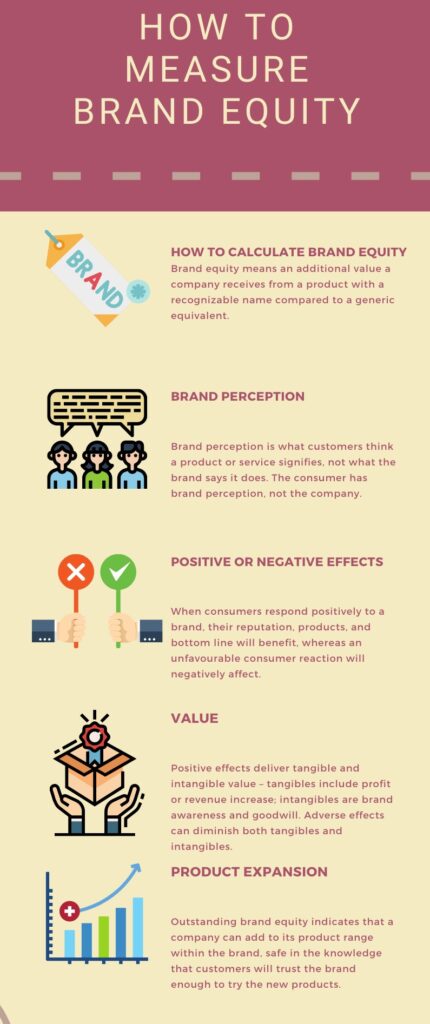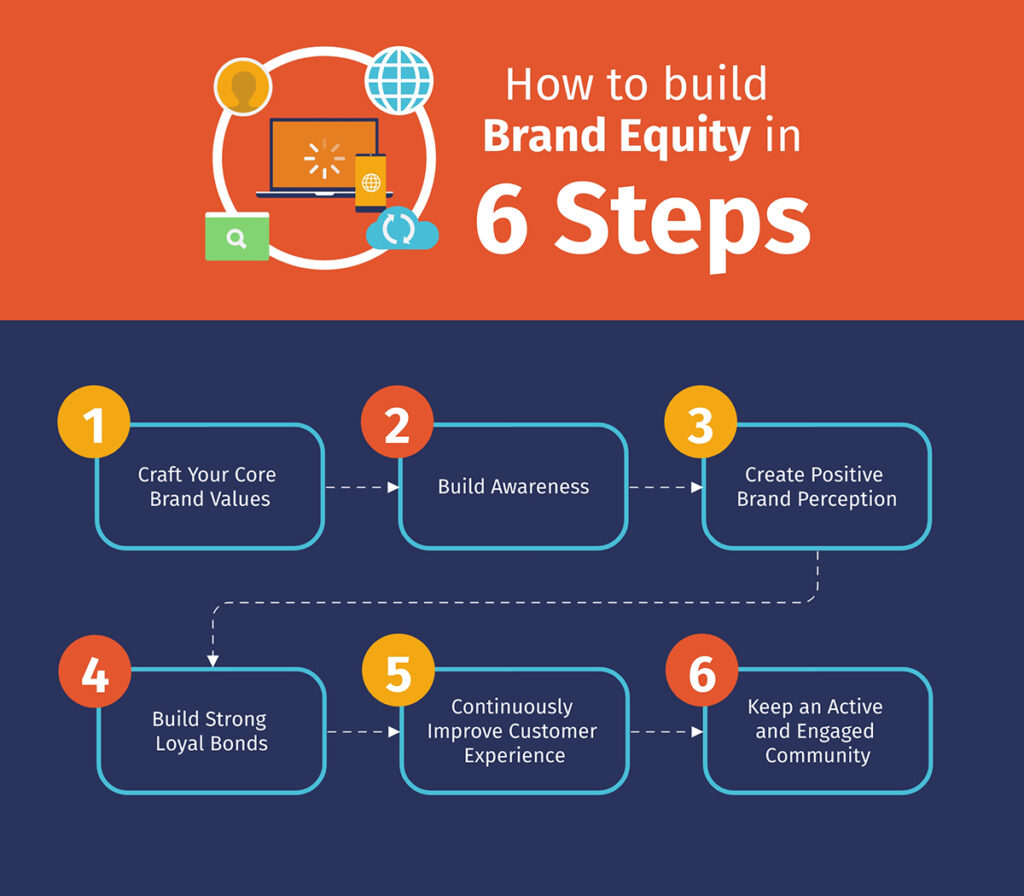What is Off-Page SEO?
What is Off-Page SEO? Off-page SEO describes the techniques used to raise a website’s search engine ranks and broaden its online presence. It aims to
Creating a high-value brand is essential for businesses looking to grow their financial success and gain recognition from consumers. Brand value, rooted in financial worth, is built upon brand equity, which is customers’ perception of a brand. By strategically increasing brand equity, businesses can expand their market presence and secure a larger share of the market. This often creates challenges for smaller companies attempting to enter the market dominated by high-value brands. To overcome these hurdles, it is crucial to focus on establishing brand recognition and ensuring that consumers are aware of your products and services. In this guide, we will explore the secrets to creating a high-value brand, including defining brand identity, delivering exceptional products or services, crafting a compelling brand story, building strong relationships, and leveraging various marketing strategies. By implementing these strategies, businesses can enhance their brand value, foster customer loyalty, and drive financial growth.

Defining a high-value brand involves establishing a strong brand identity, delivering exceptional customer experiences, and consistently meeting or exceeding customer expectations. Here are key factors to consider when defining a high-value brand:
Unique Value Proposition (UVP): Clearly articulate your brand’s unique value proposition. Identify what sets your brand apart from competitors and how it addresses customer needs or solves their problems. Your UVP should communicate the distinctive benefits and value customers can expect from your brand.
Brand Identity and Positioning: Develop a strong brand identity that aligns with your target audience and desired positioning. Consistently communicate your brand’s values, personality, and visual identity through branding elements such as logos, colors, typography, and messaging. Position your brand as the preferred choice for your target market based on the attributes and benefits that resonate with them.
Consistent Brand Messaging: Deliver a consistent brand message across all touchpoints, including marketing materials, communication channels, customer interactions, and digital presence. Ensure that your messaging reflects your brand’s values, promises, and value proposition. Consistency builds trust and reinforces the perceived value of your brand.
Exceptional Customer Experience: Strive to deliver exceptional customer experiences at every touchpoint. Invest in customer service training, personalized interactions, efficient processes, and user-friendly interfaces to create a positive and memorable experience. Consistently exceeding customer expectations builds loyalty and strengthens the perception of your brand’s value.
Quality and Reliability: Deliver high-quality products or services that consistently meet or exceed customer expectations. Prioritize product development, quality control, and ongoing improvement to maintain a reputation for reliability and excellence. Consistency in delivering quality reinforces the value customers associate with your brand.
Emotional Connection: Foster an emotional connection with your target audience by appealing to their values, aspirations, and emotions. Craft brand stories and experiences that resonate with customers on a deeper level. When customers emotionally connect with your brand, they are more likely to perceive it as high value.
Brand Reputation and Trust: Build a strong brand reputation based on trust, transparency, and ethical practices. Consistently deliver on your brand promises, respond to customer feedback, and address any issues promptly. Positive word-of-mouth and online reviews contribute to the perception of your brand’s value.
Continuous Innovation: Stay ahead of the curve by consistently innovating and adapting to meet evolving customer needs and market trends. Embrace new technologies, explore innovative product or service offerings, and anticipate future customer demands. Being seen as a brand that leads in innovation enhances its value proposition.
Strategic Partnerships and Associations: Align your brand with strategic partnerships and associations that enhance its value and credibility. Collaborate with reputable organizations, industry experts, or influencers who share similar values and target audiences. Strategic alliances can amplify your brand’s perceived value and widen its reach.
Pricing Strategy: Employ a pricing strategy that reflects the value your brand offers while considering market dynamics and competitive positioning. Avoid pricing your brand too low, as it can undermine perceived value. Instead, focus on justifying your pricing through superior quality, unique features, and exceptional customer experiences.
Remember, building a high-value brand is an ongoing process that requires consistent effort, customer-centricity, and a commitment to delivering excellence. Regularly assess customer feedback, monitor market trends, and refine your brand strategy to continuously enhance its perceived value.

Brand equity is the term used to describe the intangible worth and impression connected to a certain brand. It symbolizes a brand’s entire value and commercial power, as well as the amount of customer loyalty and trusts that it enjoys. Brand equity is developed over time through various elements, including brand awareness, brand associations, perceived quality, brand loyalty, and brand reputation.
A corporation may gain from having strong brand equity in a number of ways, including enhanced customer loyalty, competitive advantage, stronger pricing power, larger market share, and easier market expansion. Businesses invest in developing and maintaining their brand equity through consistent branding, marketing tactics, product quality, customer service, and engagement with their target audience.
To enhance and build your brand value, focusing on increasing your brand equity is essential. Brand equity forms the foundation for brand value, encompassing consumers’ perceptions and recognition of a brand and its products. Strengthening brand equity directly impacts brand value, resulting in increased market share and business growth. When brand equity is significant, it enhances the likelihood of customer preference and purchase intent.
To increase brand equity, there are several key elements to consider:
Improve Brand Identity and Awareness: Develop a recognizable and memorable brand identity that resonates with your target audience. Invest in effective branding strategies, including visual elements, messaging, and consistent communication to enhance brand awareness.
Define Your Brand Meaning: Clearly define your brand’s message to consumers. This involves identifying both the rational and emotional aspects of your brand. The rational side covers factors such as product functionality, reliability, price, and customer service, while the emotional side relates to how consumers connect with your brand on an emotional level.
Verify Brand Response: Understand how customers perceive and respond to your brand. Monitor customer feedback, conduct market research, and track brand performance metrics to gauge consumer sentiment and identify areas for improvement.
Cultivate Brand Resonance: Foster brand loyalty and strong connections with your customers. Engage in activities that encourage repeat purchases, advocacy, and emotional attachment to your brand. This includes providing exceptional customer experiences, personalized interactions, loyalty programs, and community building.
Focusing on these elements can effectively increase your brand equity, resulting in improved brand value and financial success. Building a strong brand takes time and consistent effort, but the rewards are invaluable in establishing a competitive edge and long-term customer loyalty.

The three central brand values can vary depending on the specific brand and its objectives. However, I can provide you with three commonly recognized central brand values that many companies prioritize:
Quality: Quality is a fundamental brand value that emphasizes delivering excellence in products, services, and customer experiences. It represents a commitment to providing superior value and satisfaction to customers, often through superior craftsmanship, reliable performance, and attention to detail.
Trust: Trust is essential for building strong and enduring relationships with customers. It involves establishing credibility, reliability, and transparency in all interactions. Brands that prioritize trust focus on delivering on their promises, being honest and ethical, and fostering open communication.
Innovation: Innovation is a brand value that drives progress and differentiation. Brands that embrace innovation strive to create new and unique solutions, products, or experiences that challenge the status quo. They prioritize continuous improvement, creativity, and a forward-thinking mindset to stay ahead in a competitive market.
Remember that these three values are not exhaustive, and different brands may emphasize other values that align with their specific missions, visions, and target audiences.
What is Off-Page SEO? Off-page SEO describes the techniques used to raise a website’s search engine ranks and broaden its online presence. It aims to
8 Steps You Should Take Before Expanding Your Business Abroad Where to start? Before embarking on the journey of expanding sales internationally, businesses must carefully
Designing Products That Hit the Bullseye: 5 Steps to Align with Your Target Market In today’s highly competitive business world, knowing your target market is
This website uses cookies so that we can provide you with the best user experience possible. Cookie information is stored in your browser and performs functions such as recognising you when you return to our website and helping our team to understand which sections of the website you find most interesting and useful.
Strictly Necessary Cookie should be enabled at all times so that we can save your preferences for cookie settings.
If you disable this cookie, we will not be able to save your preferences. This means that every time you visit this website you will need to enable or disable cookies again.
This website uses Google Analytics to collect anonymous information such as the number of visitors to the site, and the most popular pages.
Keeping this cookie enabled helps us to improve our website.
Please enable Strictly Necessary Cookies first so that we can save your preferences!